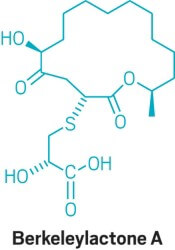
Recently, the question of creation of new types of antibiotics is particularly acute. According to forecasts from the world health organization (who), by 2050 from treatable diseases will die an estimated 10 million people per year, 14 times more than the current rates. In addition, the cumulative economic losses due to expenditure on treatment of patients, can exceed 100 trillion dollars. As a result, the creation of antibiotics that can fight resistant strains come to the fore, and perhaps scientists from the University of Montana approached the solution to this problem.
Very often in the course of research, scientists and pharmacists use the method of “pure culture.” It is based on the fact that the “isolation” of microorganisms and how microbes interact and respond to an impact. Disadvantage of this method lies in the fact that in their natural habitat bacteria do not live in isolation, they interact with several other types. As a result, in the environment of vital activity of live organisms can differ dramatically from what is observed in the laboratory. The way out of this situation can serve a slightly different method, called “cooperative culture.” In this process, instead of growing microbes in isolation, they develop in the presence of other organisms. A group of experts from the University of Montana led by Dr. Andrea Still applied this technique to mushrooms long known of the genus Penicillium that produce the familiar penicillin in the early 20th century by Alexander Fleming.

Lake Berkeley Pit. The water is acidic (pH) = 2,5. Live in it is extremely resistant microorganisms
The germs that used in their experiments, the scientists named P. fuscum and P. camembertii / clavigerum, and in essence are the extremophiles (microbes that love extreme environmental conditions). These bacteria were taken from the acidic and metal-rich Berkeley pit. Mushrooms were divided into 2 groups — the already mentioned clean and collaborative culture. Then the metabolites were separated from the samples and identified. In their experiment, the research group found that when grown in the joint culture of two different fungal species interact for the synthesis of the antibiotic that produces none of the species when grown alone.

Molecule of the selected material had a chemical formula C19H32O7S and was named Berkeleylactone A. In the course of further experiments Berkeleylactone A showed extremely high antimicrobial activity: it can block the growth of several species of gram-positive bacteria such as MRSA (Staphylococcus aureus metitillinrezistentnykh), agents of scarlet fever (Streptococcus pyogenes), and even anthrax bacteria (Bacillus anthracis). New antibiotic blocked metitillinrezistentnykh of Staphylococcus aureus better than the commonly used erythromycin, doxycycline and clindamycin. However, against gram-negative bacteria (e.g., E. coli or E. coli) Berkeleylactone A proved ineffective.
At the moment it is unclear how the fungi of the genus Penicillium interact for the formation of a new antibiotic. Scientists can only make guesses that one of the fungi produces it himself, and the second is a kind of chemical trigger. According to another version, one mushroom secretes a molecule precursor, which is subsequently modificeres another mushroom. But regardless of the mechanism, the finding could serve as a starting point in creating powerful tools to combat the threat to human life by bacteria.
Microbiologists have discovered a way to synthesize a new powerful antibiotic
Vladimir Kuznetsov